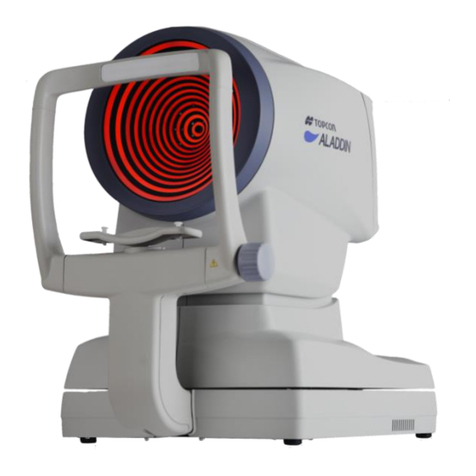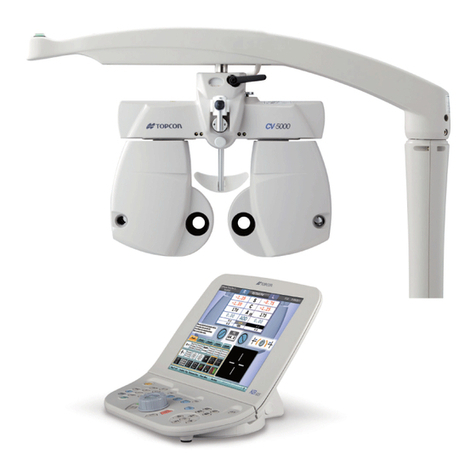
2
CAUTIONS FOR USE
Important cautions
Use this instrument carefully on the following patients.
• Patients who have epidemic corneitis, conjunctivitis or any other infectious disease
• Patients who are taking medications that cause light hypersensitivity.
Basic cautions
Be careful not to let the patient touch this instrument. The patient's hand may be pinched by the
movable part.
Do not touch the focusing knob while in auto focus mode. You may be injured.
When operating the chinrest switch, be careful not to pinch the patient's hand. The patient may
be injured.
To avoid electric shock, turn off the power switch when replacing the lamp.
To avoid burns, allow lamp to cool before replacing.
To avoid injury caused by electric shock, do not open the cover. Ask your dealer for service.
To avoid electric shock, turn off the power switch and unplug the power cord and then replace
the lamp with a rated one.
Disposal
When disposing of TRC-NW300 parts, follow the local regulations for disposal and recycling.
ENVIRONMENTAL CONDITIONS FOR USE
Temperature : 10°C - 40°C
Humidity : 30% - 90% (without dew condensation)
Air pressure : 700hPa - 1060hPa
STORING PLACE, USAGE PERIOD OR OTHERS
1. Environmental conditions (without package)
*Temperature : 10°C - 40°C
Humidity : 10% - 95% (without dew condensation)
Air pressure : 700hPa - 1060hPa
* THIS INSTRUMENT DOES NOT MEET THE TEMPERATURE REQUIREMENTS OF
ISO 15004-1 FOR STORAGE. DO NOT STORE THIS INSTRUMENT IN CONDITIONS
WHERE THE TEMPERATURE MAY RISE ABOVE 40°C OR FALL BELOW 10°C.
2. When storing the instrument, ensure that the following conditions are met:
(1) The instrument must not be splashed with water.
(2) Store the instrument away from environments where air pressure, temperature, humid-
ity, ventilation, sunlight, dust, salty/sulfurous air, etc. could cause damage.
(3) Do not store or transport the instrument on a slanted or uneven surface or in an area
where it is subject to vibrations or instability.
(4) Do not store the instrument where chemicals are stored or gas is generated.
3. Normal life span of the instrument:
8 years from delivery providing regular maintenance is performed [TOPCON data]





























